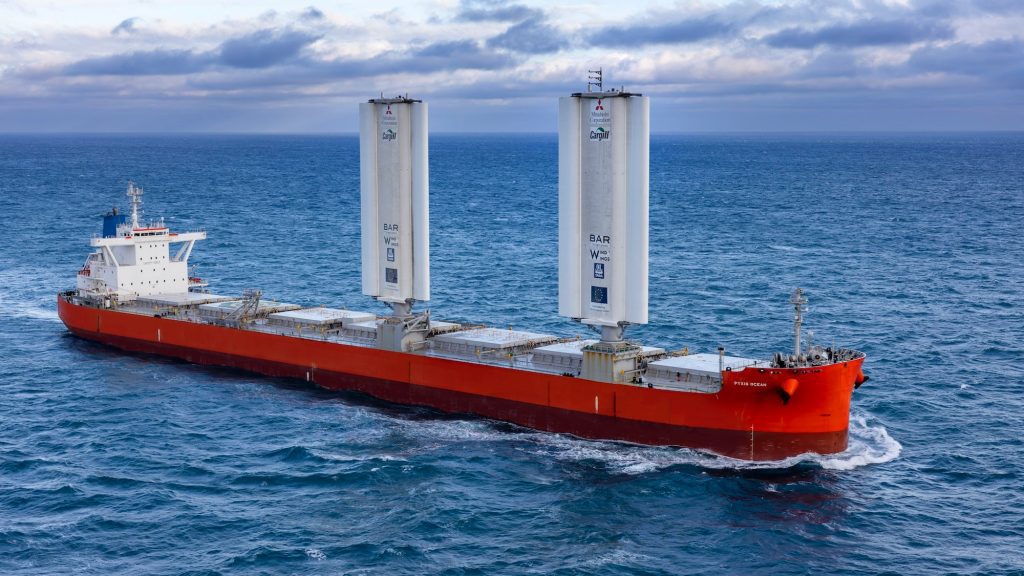A shipping vessel left China for Brazil with new improvements last August—a pair of 123-feet-tall, solid “wings” retrofitted atop its deck to use wind power for propulsion assistance. 123-feet-tall, solid “wings” retrofitted atop its deck to use wind power for propulsion assistance. Pyxis Ocean Six months later, the MC Shipping Kamsarmax vessel's owners at Cargill shared the results of its trips. shared the results of those journeys this week—and it sounds like the vertical WindWing sails could offer a promising way to reduce existing vessels’ emissions.
By using the wind force captured by its two giant, controllable sails to boost its speed, it reportedly saved an average of 3.3 tons of fuel each day. Pyxis Ocean Using the wind force captured by its two giant, controllable sails to boost its speed, it saved an average of 3.3 tons of fuel each day. Pyxis Ocean saved an average of 3.3 tons of fuel each day.
[Related: A cargo ship with 123-foot ‘WindWing’ sails has just departed on its maiden voyage.]
An equally sized ship outfitted with two WindWings could save the same amount of emissions as removing 480 cars from roads annually.
“[W]hile the Pyxis Ocean has two WindWings, most Kamsarmax vessels will carry three wings, further increasing the fuel savings and emissions reductions by a factor of 1.5,” BAR Technologies CEO John Cooper said in a statement on Tuesday.
The individual success of Pyxis Ocean is good news, but there are about 110,000 merchant ships worldwide. Furthermore, ports are currently designed for traditional ships and the added height of WindWings could complicate docking in many locations.
Cargill is working to help wind-assisted propulsion vessels operate on global trade routes and has started discussions with over 250 ports to address the logistics needed to accommodate such ships.









